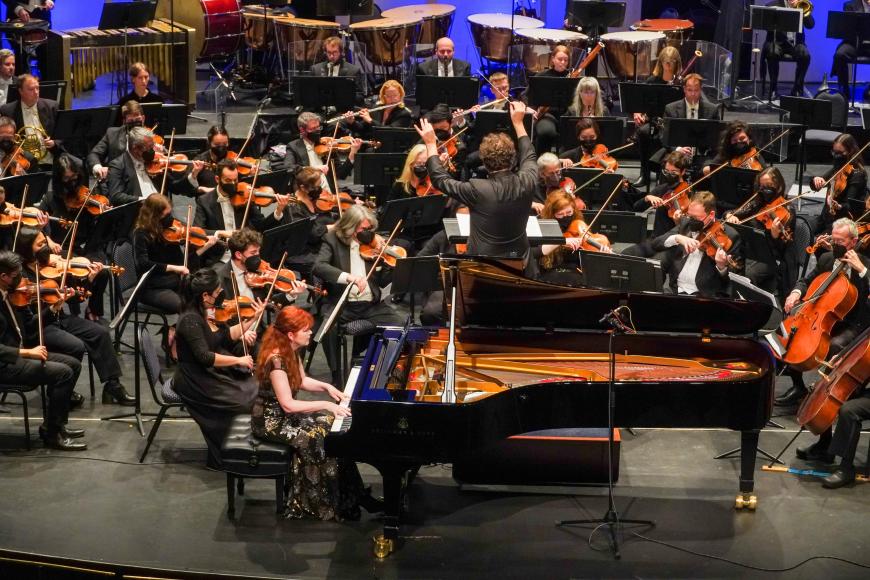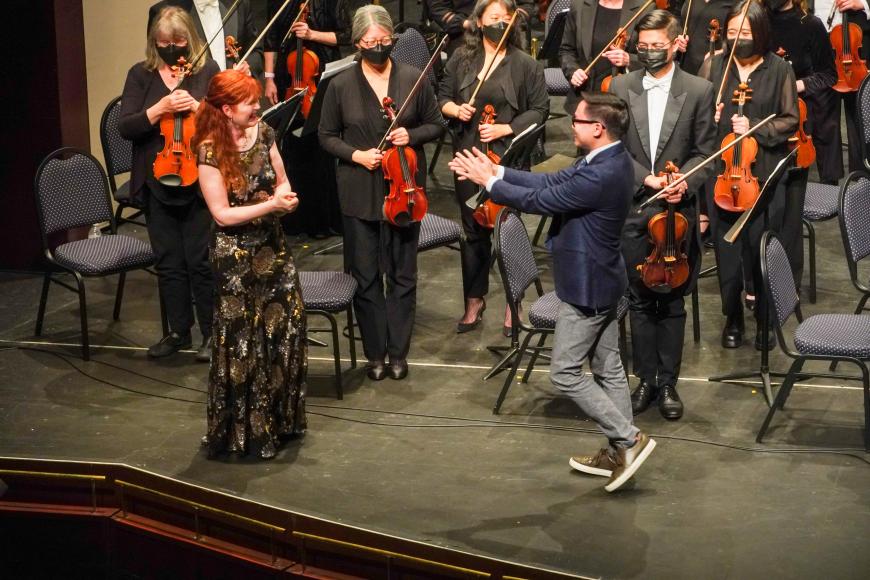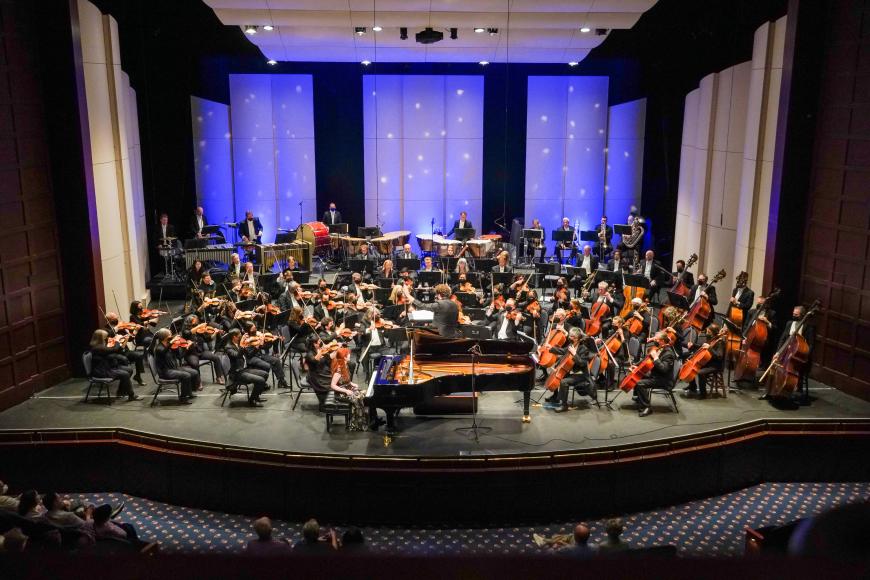
The California Symphony under Donato Cabrera — who is now artistic director as well as music director — gave another frequently daring and successful concert at the Lesher Center in Walnut Creek on Saturday, May 20.
The new music side of the program belonged to the Symphony’s current Young American Composer-in-Residence, Viet Cuong, and to Sarah Cahill, the prominent local pianist and new-music advocate, for whom Cuong has written a concerto, which received its first performance at this concert.
The piece is titled Stargazer. In Cuong’s imagination, the pianist is the gazer and the orchestra forms the stars. What this means in practice is a hushed, nocturnal single movement. In Cahill’s hands, the piano rummages around in a busy but quiet way, more in the manner of piano obbligato than a display concerto, while the orchestral sound hovers above it, emitting every bright chiming sound in its repertoire. This listener was reminded that Cuong’s most renowned work is a percussion concerto titled Re(new)al.
Heavier held lines come in and add some heft to the orchestral part. Bass drum rolls and cymbal crashes provide an energetic addition to the chimes. Sometimes the piano emerges from underneath the orchestra, but sounding as much like it as possible. Gradually the neo-Baroque ground bass which has been lurking underneath all along emerges and assumes a strong cadential role. This gives the music the same kind of repetitive soothing melancholy characteristic of a piece like Pachelbel’s Canon, and is undoubtably what the composer refers to when he speaks of achieving a healing catharsis by the end.

Stargazer doesn’t quite achieve the hypnotic luminousness of Cuong’s striking previous piece for the Symphony, a short work for strings titled Next Week’s Trees, but it was interesting, intriguing, and coherent all the way through. Above all it was colorful, marking Cuong as a composer with a distinctive voice.
Seeing William Walton’s Symphony No. 1 on the program was initially dismaying. Surely the musicians of a mere regional orchestra would not be able to achieve the unrelenting vehemence necessary to present this ferocious symphony at the highest level.
They didn’t. It was better than that.
By taking the music at a slightly less brutal pace and presenting it plainly and clearly, in a straightforward manner without attempted dazzle, the California Symphony provided a revelatory, even superior interpretation. It brought out contrasts between the louder and quieter parts, clarified the lines of a thickly orchestrated composition, and by starting the conclusion of the first movement in a relatively subdued way built up a tremendous sizzling climax unlike anything I had heard in this work before.
The second movement scherzo continued the revelatory pattern. It’s marked Presto, but holding back just a little on the tempo and letting the players articulate their parts fully allows the listener to absorb the quick exchanges between sections that so swiftly flash by.
The third movement Andante had a welcome coherence of line as one wind solo succeeds another, giving this slower music a tension that matched the other movements. This movement also replicated the first movement’s feat of a sizzling conclusion.

The musicians proceeded through the finale as impressively as in the rest of the symphony: it was particularly bouncy, if not cheerful. This movement has a reputation of being too lightweight and not fitting with the heavy-duty rest of the work. But the sound world is identical, so the contrast is really not much of a problem. The ending of this movement is whipped up into such a frothy custard by the composer that the orchestra had nothing to add to it.
By treating a tough, gnarly, and intimidating work as an intensely human endeavor, the California Symphony achieved with Walton results strikingly similar to the estimable Mahler performances by the Redwood Symphony. This shows that a regional orchestra can convey a level of artistic communication that’s not in the repertoire of more renowned ensembles. Listeners in search of new and revelatory approaches to modern classics should definitely seek out orchestras at the regional level.
The concert opened with the Roman Carnival Overture by Hector Berlioz. Cabrera chose this piece to reflect something Berlioz had in common with Walton, a love of Italy. (At the pre-concert talk, Cuong chimed in to add that he likes Italy too.) The piece received a slow, dignified, and coherent performance, avoiding its frequent problems of sounding fragmented or wayward. It fit in with the general communicative brilliance of this concert.

